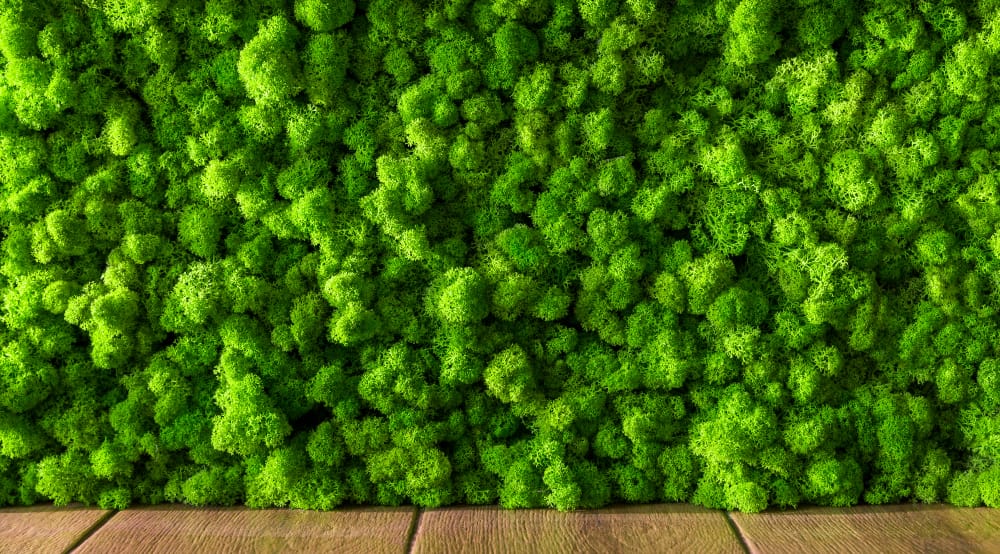
Let us help you with finding an office space
Our experts are here to help take the hard work out of finding your next office space.

Offices don’t traditionally scream ‘at one with nature’, but they’re starting to. Biophilic office design began as a trend, but its measurable effect on a workforce’s happiness, productivity and health has inspired its uptake in the world’s workplaces.
It’s unsurprising that most city-dwellers on the grind have, at some point in time, desired an escape to the country.
Some of us dream of living by the sea’s deep blue hues; the sound of its waves crashing up against the bay and the feeling of salt air against our skin.
Others dream of endless green where rolling hills rise up to blue skies. But our nine-to-five inner-city lives are a stark contrast to this.
As a trend, urbanisation has only materialised in the past 200 years – prior to this, most of the world’s population lived in rural areas.
By 2007, just over half (50.16%) of the world’s population had moved into cities and towns, with the figure rising by over 30% since. By 2016, 82.89% of the UK had been sucked into an urban environment.
For some time now, our lives have been moving further and further away from nature.
Biophilic design was coined after the theory of ‘Biophilia’, which is the “innate tendency to focus on life and lifelike processes”. It’s why we have a fascination with the outside world; it’s not a coincidence that small talk often circles round to the weather.
The term was created in the 1980s, when American biologist Edward O Wilson observed how “increasing rates of urbanisation were leading to a disconnection with the natural world”.
Amanda Lim, Head of Knight Frank’s Flexible Office Solutions team explained: “Architects, interior designers and even office managers have begun incorporating elements of Biophilia (dubbed biophilic office design) to alleviate the disparity between our urban lives and our born need to be close to nature, making our office environments more palatable.”
Biophilic spaces can feature big windows that allow us to watch the world change, natural elements like water or plants and earthy tones that mimic landscapes.
Get your monthly dose of workplace insights, productivity hacks and business leadership ideas - delivered straight to your inbox.
Architects, interior designers and even office managers have begun incorporating elements of Biophilia (dubbed biophilic office design) to alleviate the disparity between our urban lives and our born need to be close to nature, making our office environments more palatable.
Amanda Lim, Head of Knight Frank's Flexible Office Solutions
There are six design principles of Biophilia which are often used in tandem for maximum effect.
Service sectors are catching onto the benefits (both commercial and health-related) of biophilic design. Hotel guests, for example, are willing to pay 23% more for views that incorporate biophilic elements.
In hospitals, biophilic elements have been found to reduce post-operative recovery times by 8.5%. But the office market, in particular, has welcomed a host of statistics that highlight the benefits of including biophilic design in the workplace.
Businesses are now beginning to view their office space as a strategic device; investing in your workplace means investing in your people. In order to attract top talent, your space needs to reflect your culture – employees want green, dynamic, and inviting environments that they’re proud to call home.
Biophilic office design is one way to achieve that. Silicon Valley’s tech giants offer a perfect example.
In her article, Why Green, Tech-Savvy Offices Will Win the War for Talent, Teneshia Naidoo, Head of Content at Cityscape Intelligence explains: “Take, for example, Amazon’s headquarters in Seattle. Known as The Spheres, the office is a jungle-inspired greenhouse with glass orbs that are meant to pull Amazon workers out of their high-rise offices and into a workspace that’s embedded in nature.
“From rope bridges and tree houses to streams and green walls, The Spheres include thousands of plants strategically placed to encourage employees to think creatively.”
A new study by a professor at Cornell University’s Department of Design and Environmental Analysis found that in offices with natural light, employees showed an 84% decrease in eyestrain, headaches and blurred vision symptoms, which often detract from productivity levels.
In the same study, employees who sat near a window with optimised daylight exposure were 2% more productive.
Over the course of a year, this would equate to adding $100,000 in value for every 100 workers, which proves the value of your office environment on your business’s bottom-line.
In terms of employee-retention, improving your office environment is said to boost staff loyalty across all generations by 53%.
When the average employee costs an SME £12,000 to replace, enhancing your physical office space can retain your talent and prevent costly team gaps.
Some research suggests that 40% of all sickness absence can be traced back to indoor air pollution or poor air quality.
Office plants, however, can improve air quality, especially those that can absorb pollutants and weed out toxins, such as Aloe Vera, Snake Plants and Money Plants.
Likewise, dry office air can irritate the cells in our noses and throats, making us more vulnerable to allergens and viruses.
By including plants that restore the air’s water vapour levels, these consequences can be reversed.
UK charity Mind says that being in nature or green spaces can not only boost our feelings of calm, but also reduce our feelings of stress and anger – which is critical amid the stress epidemic that grips our nation.
In the latest release from the ONS, 141.4 million days were lost in 2018 due to sickness absence. Of these, 12.4% were lost to mental health conditions.
Considering we spend 90,000 hours of our lives on average in the office, incorporating design elements that mirror being in nature or green spaces can turn our workplaces from stress-inducers to stress-busters.
Research has also found that sunlight boosts our production of serotonin, also known as our ‘happy hormone’, which reduces levels of anxiety and depression.
Large windows that let in natural light can be an instant win for employee happiness.
With its history of being ahead of the curve, London has welcomed the proven impact of biophilic office design, with many flexible office space providers listing it as a highlight of their offering.

One Heddon Street adopts The WELL Building Standard, which helps its members be happier and healthier.
One Heddon Street features a living wall and an indoor garden, as well as planted trees on each floor.
The workspace also enjoys healthy levels of sunlight, which supports circadian rhythms and healthy sleep patterns – and the roof terrace gives members a chance to enjoy the sunniest days in full force.
As a bonus, the fresh air supply rate to the office is 50% above the minimum recommended level, and employees have remote control of the temperature around their desks.
Enquire about office space in The Crown Estate’s One Heddon Street

Uncommon’s workspace in the City feels less like an office and more like an indoor plant-filled sanctuary.
This office is set up to reduce stress and boost efficiency. The office bar looks like a glossy, sedimentary rock split in half, with layers of gold and bronze waves rippling through it.
Some of the desk spaces are wooden and feature curved lines with small, soothing round lamps perched upon them.
Extending the sensory experience, the stairwells are scented with lemongrass. With multiple places of ‘refuge’ and quiet time, the workspace ticks off multiple principles of biophilic design.

Nova North has a moss wall, along with curved furniture and floor to ceiling windows which overlook plenty of greenery.
Along with a roof terrace that lets you soak up the sun, The Argyll Club’s Nova North features a moss wall that blurs the boundary between the workspace and its view.
The deep green shades are complemented by bouquets of flowers which feature around breakout spaces and meeting rooms.
For a sanctuary-feel, the office has sand-coloured rugs under curved, textured seats that cocoon you around small breakout tables.

Second Home actively designs its spaces to include biophilic design, and it’s developed a reputation for its number of plants.
Famed for its number of plants, it’s been dubbed “a place where nature acts as a catalyst for creative sanctuary and innovation” by AnOther Magazine.
The workspace also has a rooftop garden that overlooks the city, featuring curved ponds and plenty of greenery.
The office also has a conservatory-like café, where the windows curve up to double as the ceiling, allowing you to watch the weather change around you.

Our experts are here to help take the hard work out of finding your next office space.